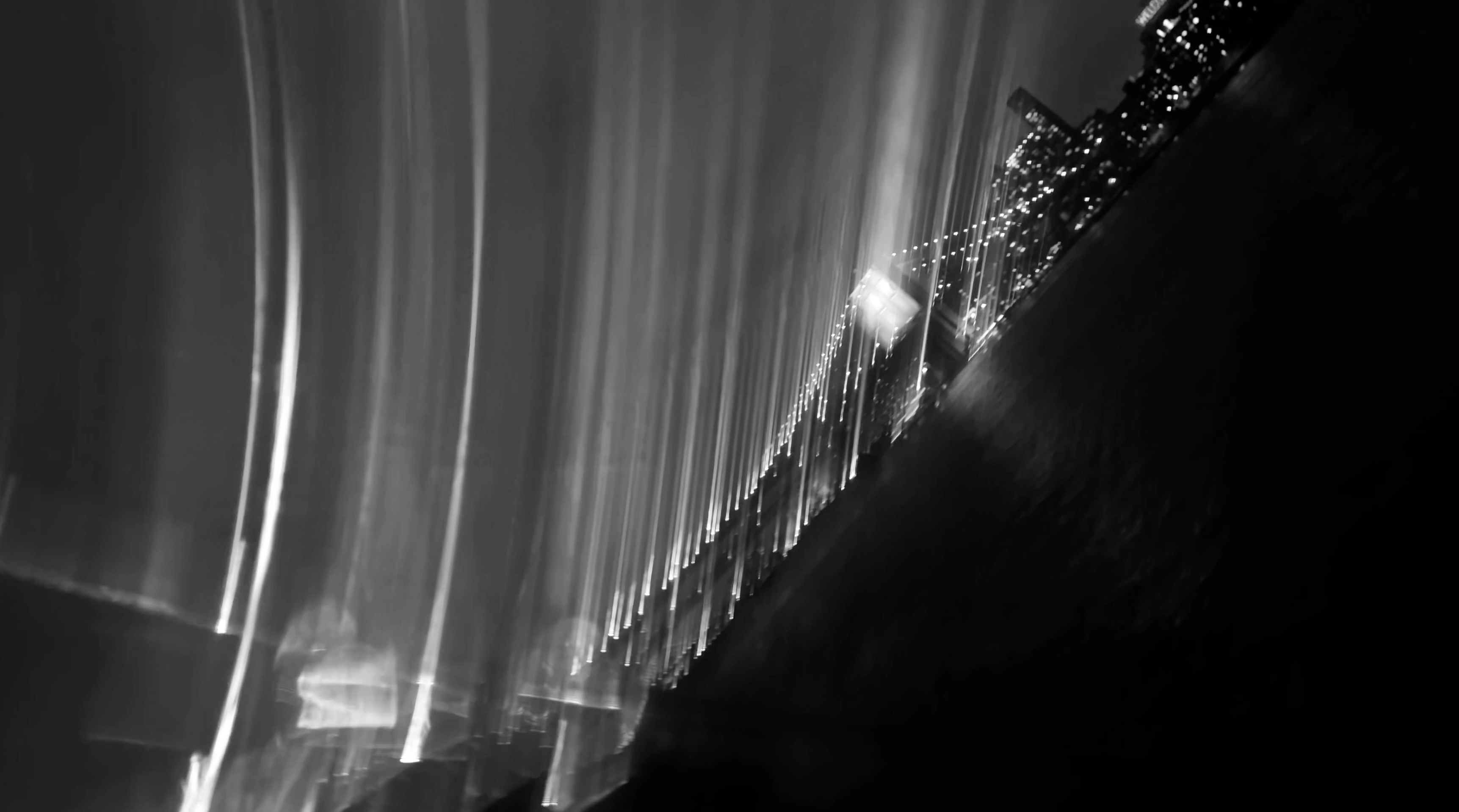—
curated by Kathrin Bentele
Song of Flight
Henri Chopin, Keta Gavasheli, Nour Mobarak, Angharad Williams
Words as a beginning and a catalyst. Gathering works of four artists whose language-based and -strewn practices at once belong to and resist the idea of representation through speech, the group exhibition Song of Flight is an exploration of the generative potential of language as material and form. As a whole, it forms a loose, fragmented collection of sounds, words, speech and noises which emerge throughout the gallery’s winding spaces – some of these grow in sonic intensity, others remain silent and introspective. Even if language can never fully let go of the hold of representation and its embeddedness within processes of signification, its mnemonic and affective impact is perhaps felt most in its material density; in the ways in which words become part of our embodied memory, again and again coming into focus. Often, it is not what is nameable or sayable that matters most, but what has settled, resists and thus goes unnoticed – that which achieves a certain density and stubbornness and in relation to which there is hardly any outside perspective that can be taken.
Similarly, the works of Henri Chopin, Keta Gavasheli, Nour Mobarak and Angharad Williams come from a place of embeddedness within language, they act from within it and assume different material forms to engage with this space. At times, the works require a withdrawal from the clarity of speech to approximate the ambiguity and unfinishedness of their subject matter. With the artists drawing and sampling from various sources, words only rarely materialise as words in this exhibition, but are displaced and materially transformed – words become physical objects, images, noises, sounds. While the works may hold the residues of a self (at times they draw from personal experience), any assertion of subjecthood remains unstable, fragmented, and malleable.
Consider, for instance, the work of Henri Chopin (1922-2008), to whom the gallery Lombardi-Kargl dedicated a survey exhibition in 2019. After he escaped a forced labour camp during World War II, his sonic memories of these events would come to infuse and haunt his later work as an artist. In the 1950s, he started to work on a new form of electronic sound poetry in which he recorded the breath, compulsions and cries of his own voice and body, exploring the spoken word as a matter of energy and as a form capable of expressing existential weight. In Chopin’s act of decoupling language from the authoritative weight of speech (the word as truth), what can be felt is a sense of disquiet, a rupture, and a committed refusal to self-disclose. In his work, language is always in flux, changing in tonality and intensity.
Keta Gavasheli’s multi-media practice likewise draws from a continued engagement with sound, poetry, and performance, often using strategies of collage to approximate the fragmented, opaque nature of memory and interior space. The video work Blurry Middle Distance (2025) for instance sketches a shifting poetic landscape of surfaces, textures, cityscapes, and a demonstration, which are only visible as a blur. As Gavasheli states at one point in the subtitle, it is perhaps wrong to assume that remembering equals owning what is lost, and so the video, while still trying to gather mnemonic fragments, is also a grappling with absence. Other works by Gavasheli containing cassette tape and cassettes act as material records of spoken and performed text by the artist. Language and words appear here only at a distance and as residue, buried, made inaccessible, and archived in another medium.
Subliminal Lambada (2024), a sound piece by Nour Mobarak, follows the artist’s long-time enquiry into psychoacoustic phenomena, resting on material processes of sampling, collaging, and patterning of different sonic sources. As we move from childhood into older age, we relate differently to our sonic environment because our sound wave frequency audibility threshold narrows with age. Through varying intonations, Subliminal Lambada creates a hallucinatory soundscape in which words and sounds are more or less audible, distorted, filtered and underlaid with changing tones. These shifts in mood and audibility are sometimes grounding, and at others disorienting and confusing, exploring the shifting relationship with our sonic environment over time. Sounds, like words, become palpable as profoundly affective textures through which we relate not only to the exterior world, but also to ourselves and to a biographic timeline. Subliminal Lambada is accompanied by a new visual work which can only be seen with UV light, exploring our perception of different light wave frequencies.
In Angharad Williams’ new suite of photographs, which are fragments of a longer stream of images from a recent solo exhibition, speech is deliberately made inaccessible. We can see the artist moving her lips to form a word, it is there and the artist delivers it, but is remains out of reach since we cannot hear her. The work’s lingering, latent presence creates a sense of unease in the room. Perhaps there is something to be said about the futility and helplessness of speech in this moment in time marked by ongoing wars and human suffering. Speech, usually an outward-turning and communicative act, is here turned inward, muted and displaced into the non-verbal.
Song of Flight is not about closure or arrival, but about a departure. The flight, or flying, as a metaphor draws upon the instable nature of language whose form and meaning is subject to constant change.
- Kathrin Bentele
Inquiry
Please leave your message below.
